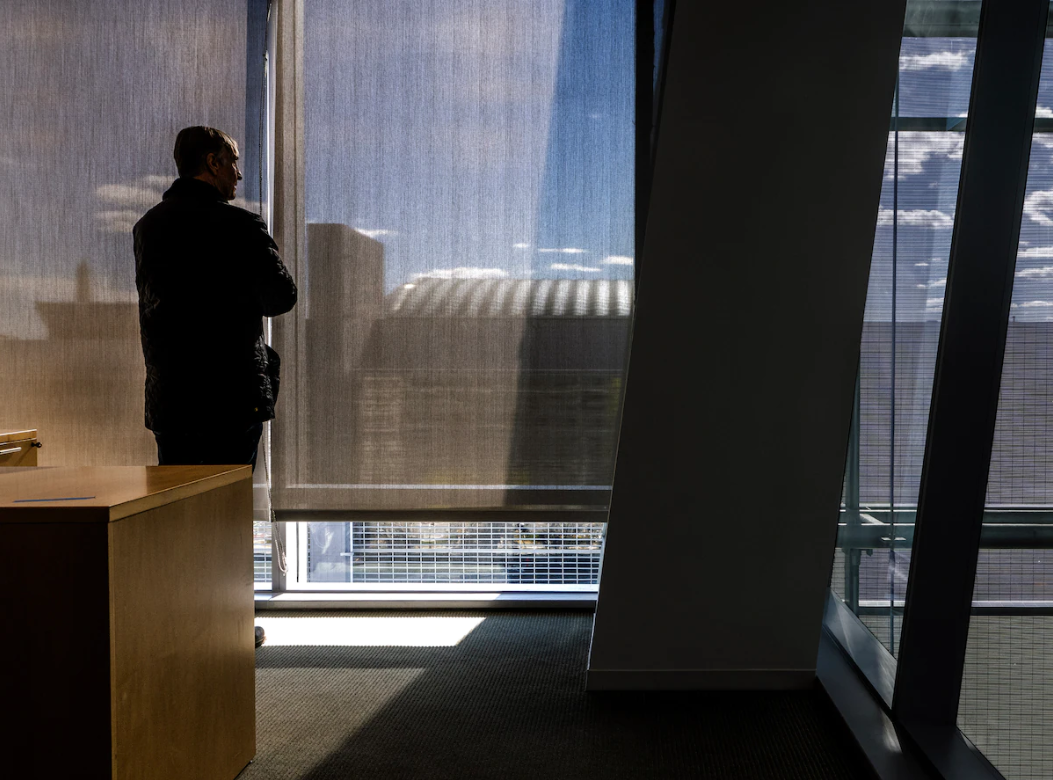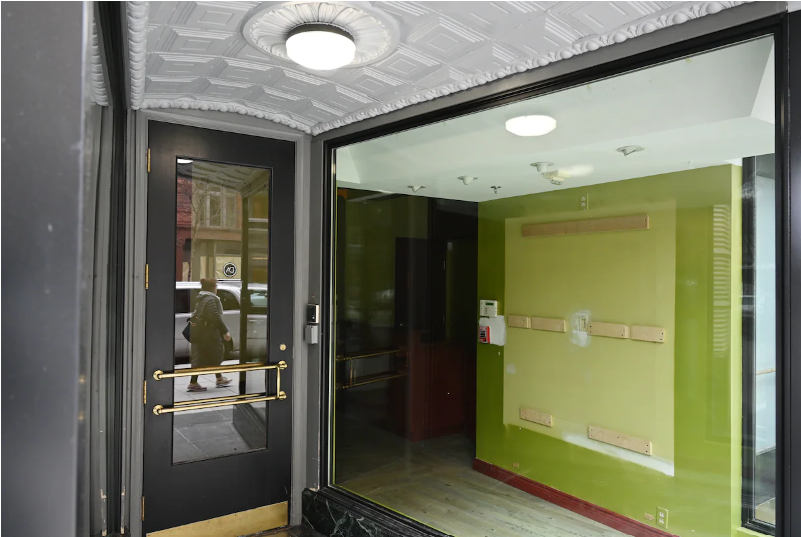Downtown D.C.’s struggles mount as many workers remain remote

As his only tenant was moving out the other day, Anthony Lanier walked through his glass office tower in downtown Washington, all too aware of the looming financial danger he faces.
Mortgage payments of about $1 million a month. A $3 million annual property tax bill.
And, beginning in March, no rental income.
In September, Lanier installed on the outside of his building near the White House a promotional splash worthy of Times Square: a 13-story-high, bright greenish-yellow sign offering discounted rent, “move in ready” offices, and the almost unheard-of option of “month-to-month” leases.
“See it to believe it!” declares a second, equally impossible-to-miss billboard overlooking Pennsylvania Avenue NW.
Lanier, whose hunt for a new tenant began before 2020, is still searching for a deal. He fears it could be two years before he replaces WilmerHale, the law firm that has occupied his building since it opened in 2006 and is moving to a new tower across the street.
“It’s humbling,” Lanier said as he walked the empty corridors of what he touts as “the best 300,000 square feet in Washington,” with a 150-foot-high atrium, lobby waterfall and rooftop views of the Washington Monument. “There are a lot of desperate real estate owners out there.”
As the third anniversary of the pandemic approaches, downtown Washington is a wounded rendition of its once robust self. Even as more of the workforce shows up daily, many streets at the city’s core are pocked by vacant storefronts, moribund sidewalks and offices that, even on the busiest days, are just over half occupied.
Mayor Muriel E. Bowser (D) has made the reinvention of downtown an urgent centerpiece of her agenda as she begins her third term. She promises to encourage the conversion of enough downtown offices to apartments over the next five years to help accommodate 15,000 new residents, an aspiration that has prompted a mix of interest and skepticism among developers.

Yet a newly constituted downtown could take years to materialize. In the meantime, D.C. leaders and business executives worry that declining tax assessments of large office buildings — already down more than 10 percent because of vacancies and an anemic sales market, according to city records — could significantly erode the revenue needed to fund public services. “We have to protect our current commercial property tax base — just period, end of story,” the mayor told The Washington Post’s editorial board recently.
Read More (...)
Tumultuous Trump trial day ends with 12 jurors, 1 alternate selected
More than a dozen killed in Ukraine after Russian strike on apartment block
Russia's meat grinder soldiers - 50,000 confirmed dead
Israel Launches Retaliatory Strike Against Iran
Apple deletes WhatsApp, Threads from China app store on orders from Beijing
TikTok ban now ‘inevitable’
Kiev demands Israel-style security guarantees
‘URANIUM’: Terrifying detail about Israel’s strike on Iran emerges
Who will be Trump’s VP? A shortlist
